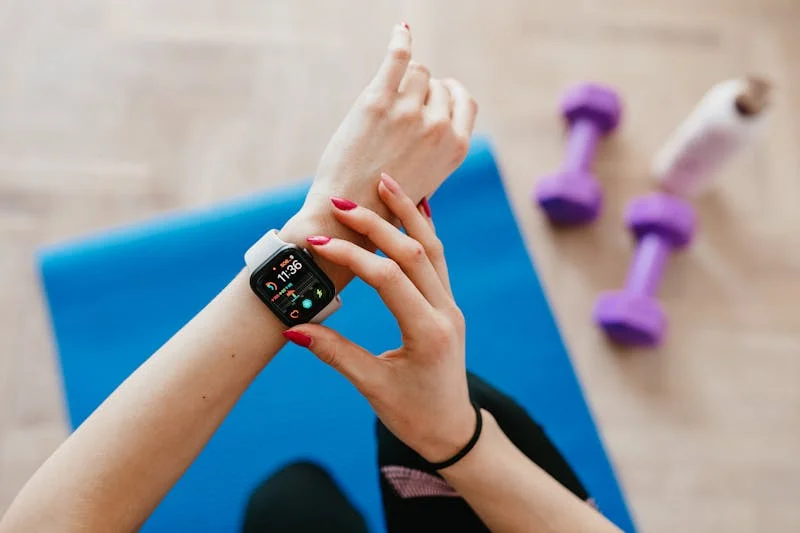Maintaining both mental and physical activity throughout the day is crucial for overall well-being. It’s not just about hitting the gym or solving a puzzle; it’s about weaving healthy habits into the fabric of your daily routine. This blog post will explore a variety of strategies to keep your mind sharp and your body moving, promoting energy, focus, and a sense of accomplishment from morning till night.

The Intertwined Nature of Mental and Physical Activity
Mental and physical well-being are inextricably linked. Physical activity benefits mental health by releasing endorphins, reducing stress hormones, and improving sleep. Conversely, a sharp mind can enhance physical performance through better focus, motivation, and strategic thinking. Thinking of them as separate entities is a disservice to both. A holistic approach, integrating both, yields the best results.
Morning Rituals: Setting the Stage for an Active Day
The first few hours of your day can significantly influence your energy and focus levels. Here are some powerful morning habits:
- Hydrate: Start your day with a glass of water. Dehydration can lead to fatigue and reduced cognitive function.
- Mindful Movement: Engage in light exercise, stretching, or yoga. This increases blood flow, improves flexibility, and sets a positive tone for the day. It doesn’t have to be intense; even 10-15 minutes can make a difference.
- Fuel Your Body: Eat a nutritious breakfast that includes protein, complex carbohydrates, and healthy fats. This provides sustained energy for both your mind and body. Avoid sugary cereals and pastries that lead to energy crashes.
- Mental Stimulation: Engage in a mentally stimulating activity, such as reading, journaling, or solving a puzzle. This activates your brain and prepares it for the day’s challenges.
- Plan Your Day: Take a few minutes to prioritize tasks and create a plan for the day. This reduces stress and helps you stay organized and focused.
Mid-Day Recharge: Preventing the Afternoon Slump
The afternoon slump is a common phenomenon. Here’s how to combat it:
- Short Bursts of Activity: Instead of sitting for hours on end, take short breaks every 20-30 minutes to stand up, stretch, or walk around. This improves circulation and prevents stiffness.
- Mindful Breaks: Step away from your work and engage in a relaxing activity, such as deep breathing exercises, meditation, or listening to calming music. Even a few minutes can help reduce stress and improve focus.
- Hydration and Nutrition: Stay hydrated by drinking water throughout the day. If you feel hungry, opt for a healthy snack, such as fruits, vegetables, nuts, or yogurt.
- Engage in Creative Activities: If possible, take a break to engage in a creative activity, such as drawing, writing, or playing a musical instrument. This can stimulate different parts of your brain and boost creativity.
- Social Interaction: Take a few minutes to connect with colleagues or friends. Social interaction can boost mood and reduce feelings of isolation.
Evening Wind-Down: Preparing for Rest and Recovery
The evening is a time to relax and prepare for sleep, which is essential for both physical and mental recovery.
- Physical Activity (Moderate Intensity): Engage in moderate-intensity exercise, such as walking, jogging, or swimming. Avoid intense workouts close to bedtime, as they can interfere with sleep.
- Mental Relaxation: Engage in relaxing activities, such as reading, taking a warm bath, or listening to calming music. Avoid screen time close to bedtime, as the blue light emitted from electronic devices can disrupt sleep.
- Reflect on Your Day: Take some time to reflect on your day, acknowledging your accomplishments and identifying areas for improvement. This can promote a sense of accomplishment and reduce stress.
- Prepare for Sleep: Establish a regular sleep schedule and create a relaxing bedtime routine. Ensure your bedroom is dark, quiet, and cool.
Integrating Mental and Physical Activity Throughout the Day
Here are some strategies for seamlessly integrating mental and physical activity into your daily routine:
- Active Commuting: If possible, walk or bike to work or school. This combines physical activity with your daily commute.
- Walking Meetings: Instead of sitting in a conference room, consider having walking meetings. This combines physical activity with work-related discussions.
- Desk Exercises: Perform simple exercises at your desk, such as leg lifts, shoulder rolls, or stretches. This can help improve circulation and prevent stiffness.
- Mental Breaks During Physical Activity: Use physical activity as an opportunity to clear your mind and engage in mental relaxation techniques, such as mindfulness or visualization.
- Physical Activity During Mental Breaks: Use mental breaks as an opportunity to get some physical activity, such as taking a short walk or doing some stretches.
- Learning New Skills: Engage in activities that challenge both your mind and body, such as learning a new language, playing a musical instrument, or taking a dance class.
- Setting Realistic Goals: Set achievable goals for both mental and physical activity. Start small and gradually increase the intensity and duration of your activities.
- Tracking Your Progress: Keep track of your progress to stay motivated and accountable. Use a journal, fitness tracker, or other tools to monitor your activities and achievements.
The Benefits of a Holistic Approach
Adopting a holistic approach to mental and physical activity offers numerous benefits:
- Improved Mood and Reduced Stress: Regular physical activity and mental stimulation can help improve mood, reduce stress, and promote emotional well-being.
- Increased Energy Levels: Staying active throughout the day can boost energy levels and combat fatigue.
- Enhanced Cognitive Function: Mental stimulation can improve memory, focus, and cognitive function.
- Better Sleep Quality: Regular physical activity and relaxation techniques can promote better sleep quality.
- Reduced Risk of Chronic Diseases: Maintaining a healthy lifestyle can reduce the risk of chronic diseases, such as heart disease, diabetes, and some types of cancer.
- Increased Self-Esteem and Confidence: Achieving your goals and taking care of your well-being can boost self-esteem and confidence.
- Improved Overall Quality of Life: A holistic approach to mental and physical activity can significantly improve overall quality of life.
Overcoming Challenges and Staying Motivated
It’s not always easy to stay mentally and physically active. Here are some tips for overcoming challenges and staying motivated:
- Find Activities You Enjoy: Choose activities that you find enjoyable and engaging. This will make it more likely that you’ll stick with them.
- Make it a Habit: Incorporate your chosen activities into your daily routine so that they become habits.
- Find a Support System: Connect with friends, family members, or colleagues who share your goals and can provide support and encouragement.
- Be Patient and Persistent: It takes time to develop healthy habits. Be patient with yourself and don’t get discouraged if you have setbacks.
- Reward Yourself: Celebrate your accomplishments and reward yourself for your efforts.
Conclusion: A Lifelong Journey
Staying mentally and physically active is not a destination but a lifelong journey. By incorporating these strategies into your daily routine, you can improve your overall well-being, boost your energy levels, enhance your cognitive function, and live a more fulfilling life. Remember that small changes can make a big difference. Start with a few simple habits and gradually build from there. The key is to find what works best for you and make it a sustainable part of your lifestyle. Your mind and body will thank you for it.





Leave a Reply
You must be logged in to post a comment.